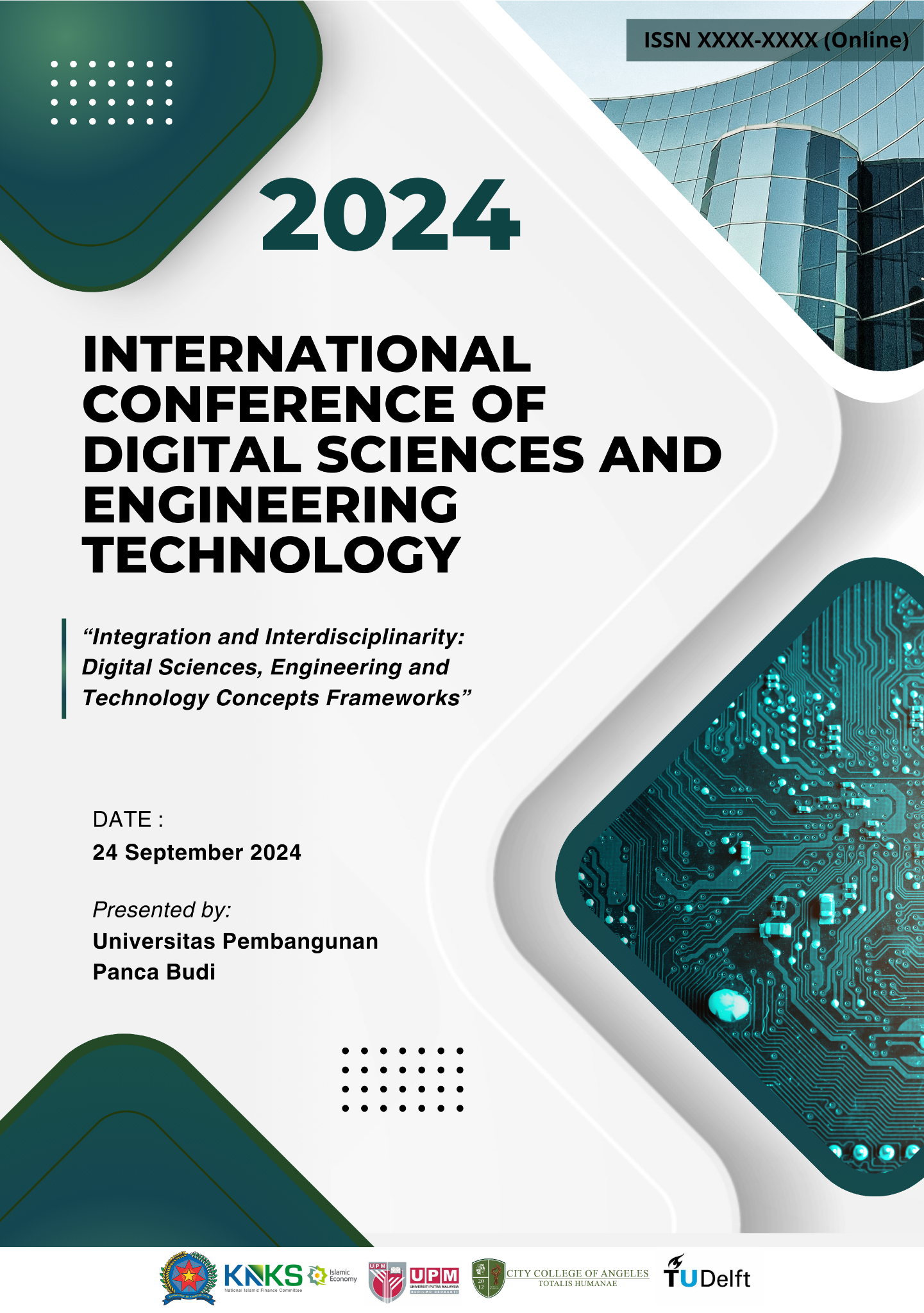Automatic Lighting System Design Using Sound Sensor
Keywords:
Light Automation, Sound Sensor, Arduino Microcontroller, Inverter, Backup Energy, Relay, Voice Control, Automatic System.Abstract
This study aims to design and implement a sound sensor-based lighting automation system that can function during a power outage. This system utilizes a backup energy source from a battery that is distributed through an inverter to ensure smooth operation of the lights even if the main power is cut off. The Arduino microcontroller is programmed to receive input from the FC-04 sound sensor, which detects sound signals as commands to turn the lights on or off. This system uses a relay as an electronic switch controlled by Arduino, which allows the lights to turn on or off based on voice commands. The test results show that the system functions well, with a fast response to sound changes and efficient operation. The test was conducted using three 5-watt lamps, and the response to voice commands can be done well at a distance of 3 meters. The appropriate sound threshold setting and system response speed provide a smooth and efficient user experience. This study shows that a sound sensor-based lighting automation system can be a practical and efficient solution for controlling household lighting, while also providing ease of use in emergency conditions due to power outages.
References
Alexandru C. dan Tatu NI, “Desain optimal pelacak surya yang digunakan untukstring fotovoltaik,” J. Perbarui. Mempertahankan. ENERGI, jilid. 5, 2013.
Juang J. dan R. Radharamanan, “Desain Sistem Pelacakan Surya untukEnergiTerbarukan,” 2014.
Ayvazyan GY, Kirakosyan GH dan Vardanyan AH, “Operasi DayaMaksimum sistem PV menggunakan kontrol logika fuzzy,” Armen.J.Phys., vol. 1, 2008.
Singh GK, “Pembangkit listrik tenaga surya oleh PV(fotovoltaik) teknologi: Sebuah tinjauan,” Energi, vol. 53, 2013, hlm. 1–13.
Eke R. dan Senturk A., "Perbandingan kinerja pelacakan matahari sumbuganda versus sistem PV tetap," Sol. Energi, vol. 86, tidak. 9, 2012, hlm.2665–2672.
Clifford MJ dan Eastwood D., “Desain pelacak surya pasif baru,” Sol.Energi, vol. 77, tidak. 3, 2004, hlm. 269–280.
Nsengiyumva W., Chen SG, Hu L. dan Chen X., “Kemajuan dan tantanganterbaru dalam Sistem Pelacakan Surya (STS): Tinjauan,” Memperbarui.Mempertahankan. Energi Rev., jilid. 81, tidak. April, 2018, hlm.250–279.
Ya'u JM, Tinjauan tentang Sistem Pelacakan Surya dan Klasifikasinya. “J. Energy, Environ. Kimia Ind., vol. 2, tidak. 3, 2017, hlm. 46–50.
Smith, J. & Williams, R. (2020). Introduction to Automation Systems. New York: McGraw-Hill.
Brown, A. (2019). Microcontroller Applications in Control Systems. Boston: Academic Press.
Khan, M. R. & Patel, S. (2018). "Comparison of Microcontroller and Microprocessor for Embedded Systems," Journal of Engineering Research, 45(2), 123-135.
Lee, C. & Park, J. (2021). "Voice-Controlled Home Automation Using Microcontrollers," International Journal of Smart Technology, 14(4), 205-216.
Roberts, L. (2019). Smart Homes: A Guide to Modern Automation. London: TechBooks Publishing.
Patel, D. & Singh, A. (2022). "Energy Efficiency in Home Automation Systems: A Case Study," Energy Research Journal, 56(7), 421-430.
Downloads
Published
How to Cite
Issue
Section
License
Copyright (c) 2024 Mirza Surya Darma; Beni Satria, Amani Darma Tarigan

This work is licensed under a Creative Commons Attribution-ShareAlike 4.0 International License.















